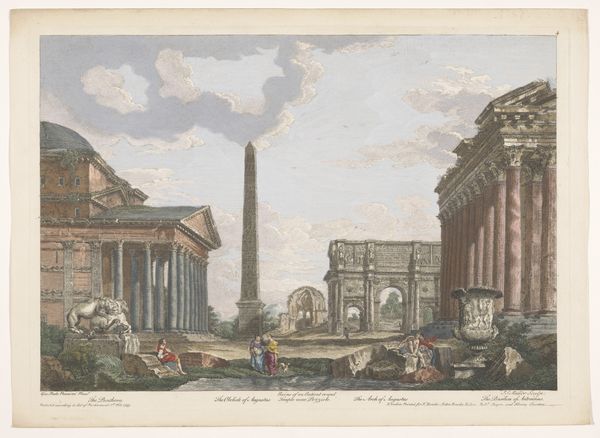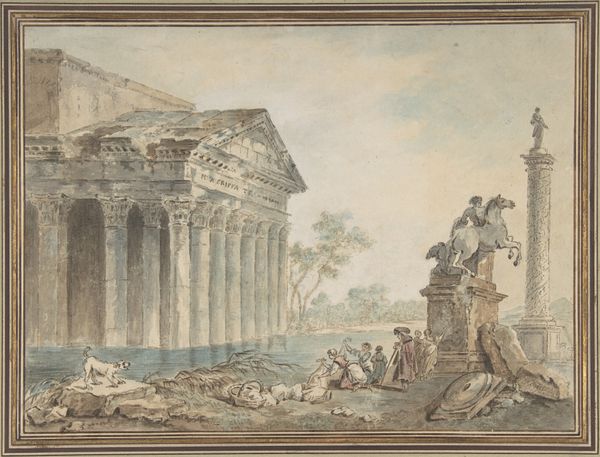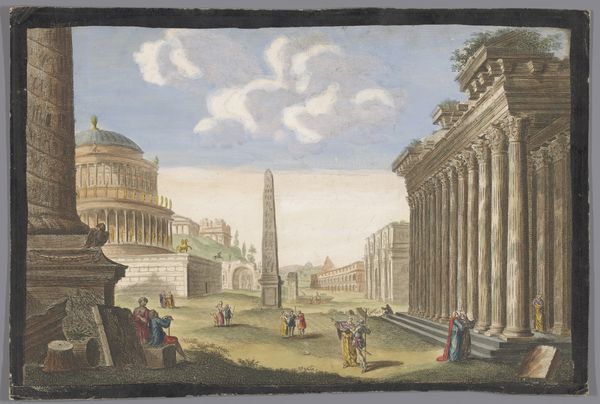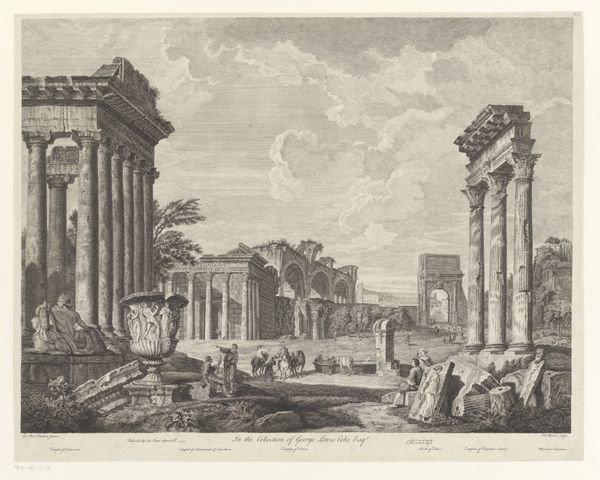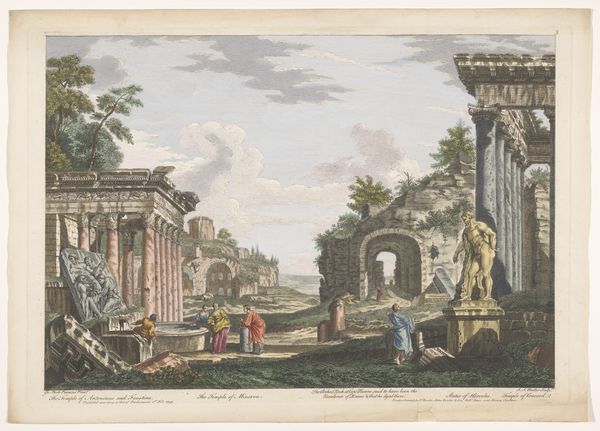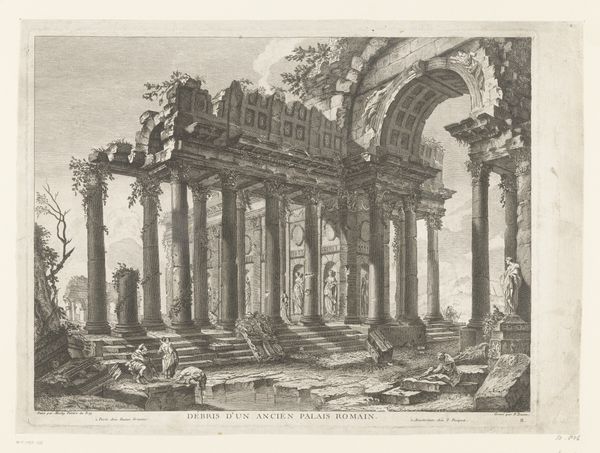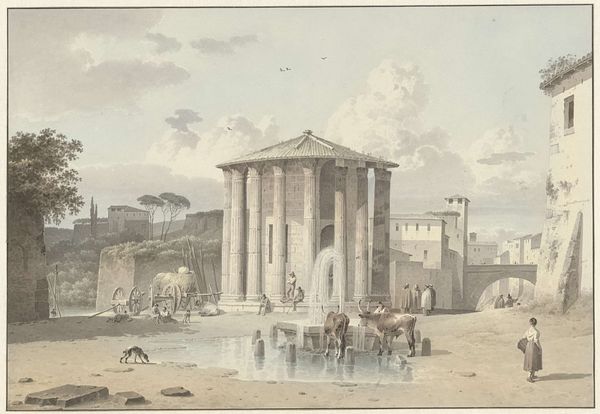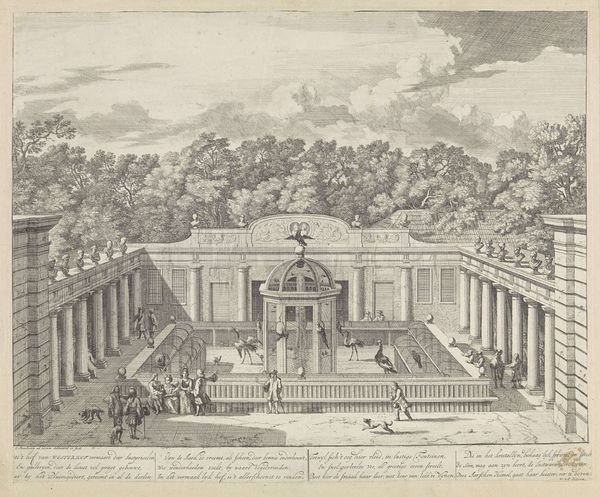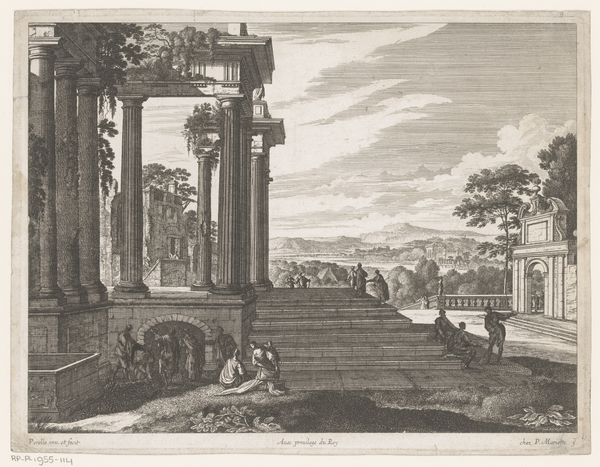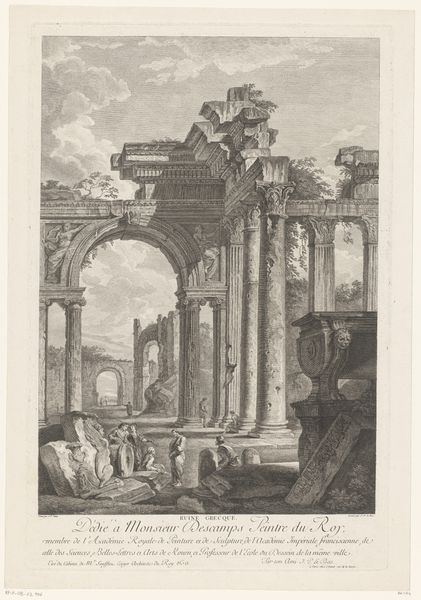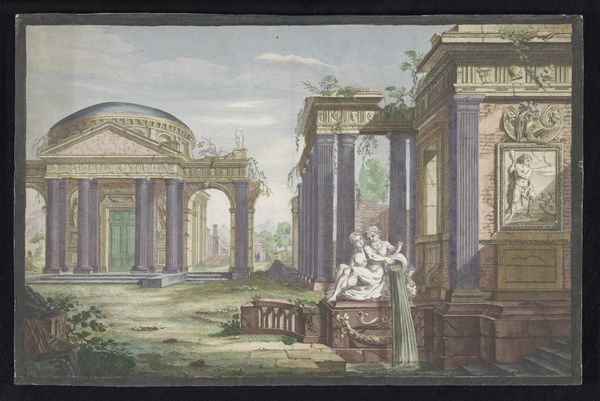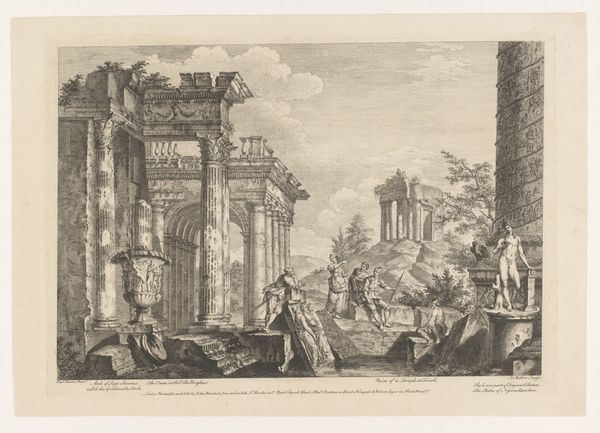
Gezicht op de ruïnes van de Tempel van Hercules Invictus, de Tempel van Portunus en andere monumenten te Rome Possibly 1753
0:00
0:00
robertsayer
Rijksmuseum
print, engraving, architecture
#
neoclacissism
# print
#
landscape
#
classical-realism
#
coloured pencil
#
cityscape
#
history-painting
#
engraving
#
watercolor
#
architecture
Dimensions: height 332 mm, width 468 mm
Copyright: Rijks Museum: Open Domain
Editor: This is “View of the Ruins of the Temple of Hercules Invictus, the Temple of Portunus, and other monuments in Rome," an engraving with watercolor, possibly from 1753, by Robert Sayer. It's a really lovely scene, though quite… orderly, even for ruins! What do you see in this piece? Curator: I see an idealized vision of Rome, one that's steeped in the politics of the era. Neoclassicism was rising, fueled by Enlightenment ideals, but also colonial power. How do you think this image might participate in a larger narrative? Editor: Well, the style definitely echoes the glory of antiquity, maybe suggesting that current European powers are inheritors of that legacy? It almost romanticizes this colonial vision of ancient grandeur… Curator: Exactly! It invites us to think critically about whose gaze is privileged here. The very act of depicting these ruins as beautiful and ordered contributes to a particular narrative about power and cultural ownership. Do you see any contemporary parallels in the art world? Editor: I guess it reminds me of contemporary debates about representation, like museum collections reflecting colonial legacies and ongoing power imbalances… So even landscape prints like this one are part of those same discussions? Curator: Precisely. This piece helps us challenge what we consider ‘neutral’ or ‘objective.’ It reflects not only architectural ruins, but also the ruins of empires, both past and present. Editor: I never thought about landscape prints this way! It's like each one is quietly making an argument. Curator: Indeed. Looking closely reveals that landscapes aren’t passive scenes, but active participants in cultural conversations.
Comments
No comments
Be the first to comment and join the conversation on the ultimate creative platform.

